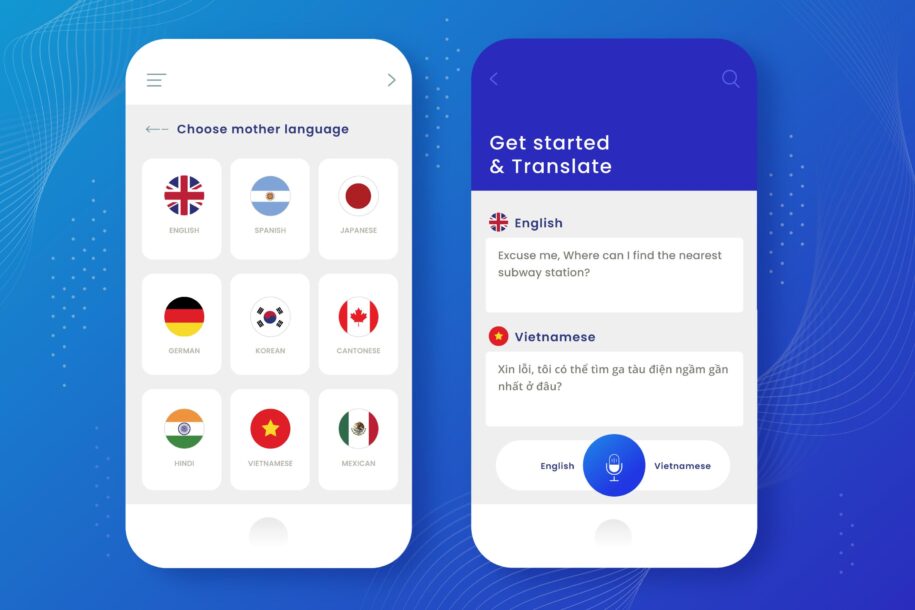Language learning apps have become indispensable tools in the dynamic realm of education technology, revolutionizing how individuals acquire new linguistic skills. As global connectivity surges, the demand for accessible and interactive language learning solutions has propelled the development of diverse applications, catering to the linguistic aspirations of a broad audience. Against this backdrop, the pivotal question emerges: How much does it cost to develop a language-learning app?
Embarking on the journey to create a language-learning app entails navigating through many considerations, each with its financial implications. From cutting-edge features and user-friendly interfaces to comprehensive content and adaptive learning algorithms, the development process involves a delicate balance between innovation and cost-effectiveness. This exploration aims to unravel the intricacies of app development, shedding light on the factors that influence costs and providing insights into the investment required to craft a compelling language learning experience. Join us as we delve into the financial landscape of language learning app development, deciphering the expenses that pave the way for a technologically advanced and pedagogically sound language acquisition tool.
What are the Key Features of a Language Learning App?
A well-designed language learning app should possess many key features to provide a practical and engaging learning experience. These features are crucial for catering to diverse learning styles and ensuring users can effectively acquire new language skills. Here are some key features commonly found in successful language-learning apps:
User-Friendly Interface:
An intuitive and user-friendly interface ensures learners can navigate the app easily. Clear menu structures, easily accessible features, and a visually appealing design contribute to a positive user experience.
Multilingual Support:
The app should offer support for multiple languages to accommodate learners of various languages. This includes the target language(s) being learned and interface language options for users worldwide.
Comprehensive Content:
High-quality and diverse content is crucial for effective language learning. This includes a variety of lessons, vocabulary, grammar exercises, and multimedia content such as audio and video to cater to different learning preferences.
Interactive Exercises and Games:
Interactive exercises and language games make the learning process enjoyable and help reinforce language concepts. Gamification elements, such as rewards and progress tracking, can motivate users to stay engaged.
Speech Recognition Technology:
Incorporating speech recognition technology allows users to practice pronunciation and receive instant feedback. This feature is especially beneficial for improving speaking and listening skills.
Progress Tracking and Analytics:
The app should include features for users to track their progress over time. Analytics can provide insights into strengths and weaknesses, allowing learners to focus on specific areas that need improvement.
Offline Access:
To accommodate learners with limited internet access or those who prefer to study online, offline access to lessons and materials is crucial. This feature enhances the app’s accessibility and convenience.
Personalized Learning Paths:
Adaptive learning algorithms that tailor lessons to individual progress and learning styles enhance the app’s effectiveness. Personalized learning paths ensure that users receive content at the appropriate difficulty level.
Social and Community Features:
Incorporating social features such as discussion forums, language exchange options, or peer-to-peer challenges can create a sense of community among users, fostering collaboration and motivation.
Feedback and Assessment Mechanisms:
Providing timely and constructive feedback on exercises and assessments helps users understand their strengths and weaknesses. Regular inspections also contribute to a structured learning experience.
Related Article:
What are the Key Features of a Language Learning App?
Developing a language learning app involves many factors significantly influencing the overall cost. Understanding these factors is crucial for project planning and budgeting. Here’s an in-depth exploration of the key elements that can impact language learning management system cost:
App Complexity and Features:
The complexity of features directly correlates with development costs. Essential apps with standard features will be more cost-effective than advanced functionalities such as speech recognition, augmented reality, or adaptive learning algorithms.
Platform and Device Compatibility:
The choice of platforms (iOS, Android, or both) and device compatibility (smartphones, tablets, web) affects development costs. Developing multiple platforms and ensuring responsiveness across various devices increases the overall workload and price.
Multilingual Support:
Supporting multiple languages complicates content creation, translation, and localization efforts. The more languages the app accommodates, the higher the cost of creating and maintaining diverse language resources.
Content Creation and Licensing:
High-quality and comprehensive content, including lessons, exercises, and multimedia elements, contributes significantly to the app’s effectiveness. The cost of creating original content or licensing existing materials from reputable sources impacts the overall development budget.
User Interface (UI) and User Experience (UX) Design:
A well-designed, user-friendly interface enhances the app’s appeal and usability. Investing in professional UI/UX design services contributes to a positive user experience but can add to development costs.
Gamification and Interactive Elements:
Integrating gamification elements and interactive features, such as language games, quizzes, and challenges, enhances user engagement. However, developing and implementing these features can increase development time and costs.
Integration of Third-Party APIs:
Utilizing third-party APIs for features like speech recognition, translation services, or social media integration can expedite development but may incur additional costs or subscription fees.
Offline Access Capability:
Enabling offline access requires the development of storage and synchronization mechanisms. This adds complexity to the app’s architecture, impacting development costs.
Security Measures:
Implementing robust security measures to protect user data and ensure the app’s integrity is essential. Enhanced security features may require additional development resources and contribute to higher costs.
Testing and Quality Assurance:
Rigorous testing ensures the app functions seamlessly across various devices and scenarios. Investing in comprehensive quality assurance processes can add to the overall development budget.
Legal and Compliance Requirements:
Adhering to legal and compliance standards, especially regarding data protection and privacy laws, may necessitate additional development efforts and resources.
Project Management and Team Composition:
The size and composition of the development team, as well as project management methodologies, influence costs. Highly skilled professionals, project managers, and adherence to agile development practices can contribute to increased expenses.
Conclusion
In conclusion, developing a language-learning app is a nuanced exploration marked by various considerations and financial intricacies. The question of how much it costs to bring such an educational tool to life involves examining multiple factors. From the difficulties of app complexity and the inclusion of innovative features to the demands of multilingual support and the creation of comprehensive content, the development process is a dynamic interplay of choices that directly impact the overall cost.
While the investment required can vary significantly based on the chosen features, platform compatibility, and the level of user engagement sought, it is clear that a well-crafted language learning app is a substantial undertaking. The commitment to user-friendly interfaces, interactive elements, and personalized learning experiences contributes not only to the financial outlay but also to the app’s potential effectiveness in fostering language acquisition.
As the language education landscape continues to evolve in the digital age, the cost of developing a language learning app is not merely an economic consideration but a strategic investment in bridging linguistic gaps and providing accessible education globally. In navigating these financial considerations, developers, educators, and learners play pivotal roles in shaping the future of language learning, where innovation and effective pedagogy converge to create transformative and engaging language acquisition experiences.

